One of the layers that make up the Earth’s atmosphere is the stratosphere, which makes up 20% of the overall air supply. The stratosphere is the second layer from the surface of the planet among the five main layers, measured in kilometers from the Earth.
Location and Altitude Above Earth
Situated between the underlying troposphere and the overlying mesosphere, this atmospheric region known as the stratosphere begins immediately after the tropopause. The tropopause, which marks the boundary between the troposphere and the stratosphere, is located approximately 10 km above the Earth’s poles and gradually increases in height towards the equator.
The shape of the lower boundary of the stratosphere is directly influenced by the transitional section of the atmosphere below it. The tropopause exhibits irregular contours, as its altitude is dependent on the presence of strong climatic phenomena. It is higher above anticyclones and lower above cyclones. Beyond the tropopause, the stratosphere layer extends, mirroring its jagged outlines.
The layer of the atmosphere that extends from 11 km to 50 km above the Earth’s surface is known as the stratosphere. Its lower boundary is found at 11 km above the Earth near the poles, while it becomes higher towards the equator, reaching 18 km above the surface at 0° latitude. The upper boundary of this layer is situated at a height of 50-55 km above the Earth.
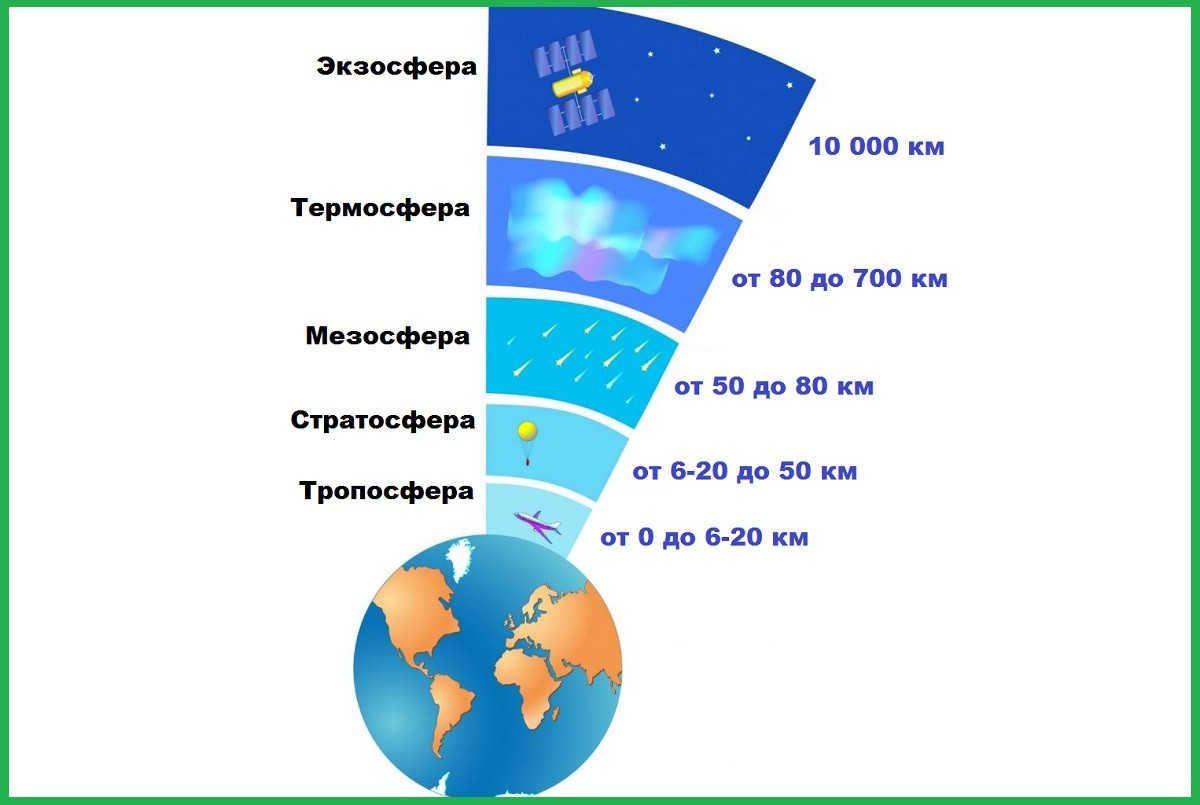
Structure of the stratosphere
Regarding its composition, the stratosphere consists of four distinct layers. These layers are as follows:
The total expanse of this region measures approximately 40 kilometers. The lower portion spans from 11 to 25 kilometers, while the upper portion (also known as the inversion zone) ranges from 25 to 50 kilometers. This division is closely connected to the positioning of the ozone layer.
The substance’s layer stretches across the entire stratosphere and extends beyond its upper limit. The ozonosphere commences at an elevation of 15-20 km and terminates at 55-60 km above the Earth’s surface, which is within the mesosphere. Ozone formation occurs through photochemical reactions or the interaction process of oxygen with ultraviolet radiation. The most intense reactions are observed at an altitude of 30 km, while the highest concentration of ozone is found at 25 km above the planet. Consequently, the stratosphere is divided into two sections at this level.
The upper portion of this atmospheric layer culminates at the stratopause, which acts as the boundary between the stratosphere and the mesosphere. The stratopause is characterized by a constant air temperature of approximately 0°C.
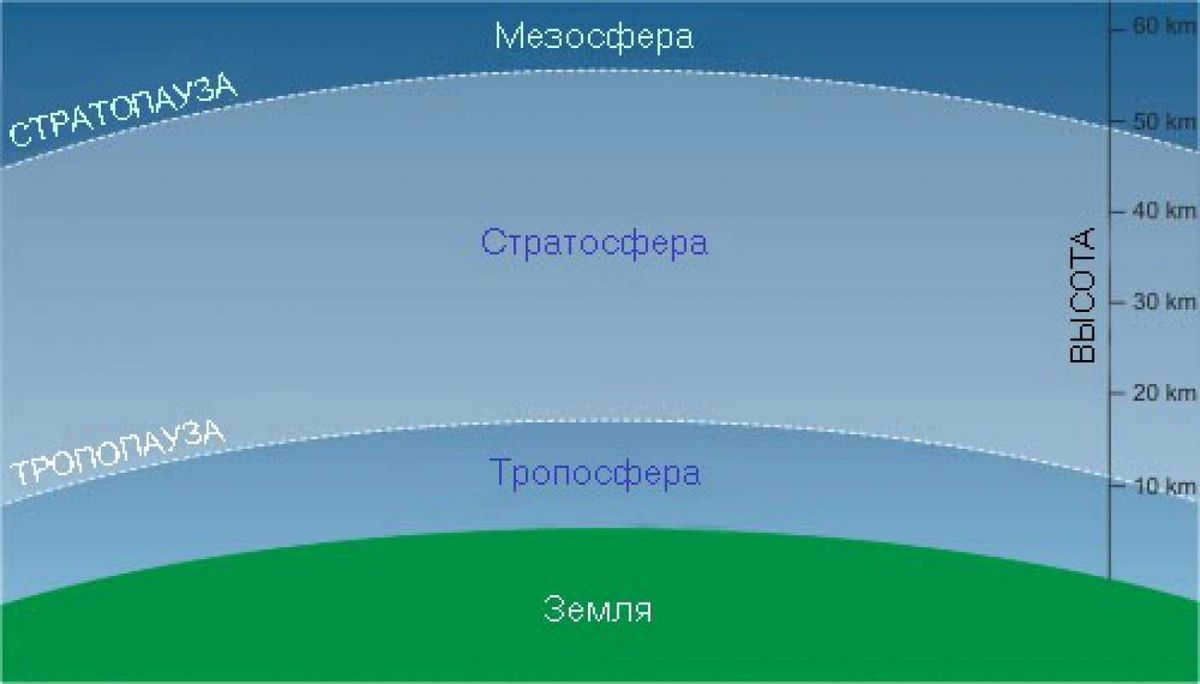
Properties and characteristics
The stratosphere contains 90% of the ozone found in the Earth’s atmosphere. Along with ozone and oxygen, it also contains various impurities. However, the number of fine dust particles in the stratosphere is only half as much as the amount of sulfate aerosol particles. In terms of density, the air in this region of the atmosphere is hundreds of times lower than at sea level.
The ozone layer within this region acts as a protective shield safeguarding the Earth from the harmful radiation emitted by the Sun – ultraviolet (UV) radiation. This unique barrier also marks the outermost boundary of the biosphere, which is the zone where living organisms can thrive. Conditions beyond this barrier are unsuitable for any form of life. As a result, life can only exist beneath the ozone layer. This implies that the stratosphere, in terms of habitability, can be divided into two sections. The lower section (beneath the ozone shield) is inhabited by living organisms, while the upper section, above it, remains uninhabited.
Despite the considerable expanse occupied by the ozone layer, the total amount of matter accumulated within a distinct continuous layer around the Earth would be sufficient to form a shield with a thickness ranging from 1.7 to 4 mm under normal pressure.
The stratosphere exhibits a higher level of uniformity in its structure compared to the underlying troposphere. As a result of the gradual decrease in gas density with increasing altitude, the dielectric constant in the stratosphere is 1. Consequently, the influence of the stratosphere on the propagation of radio waves is minimal.
In this particular atmospheric region, a significant portion of UV radiation becomes trapped. Within the stratosphere, the energy of its constituent components, namely short waves, undergoes transformation. These rays give rise to a range of phenomena and reactions, including:
- ionization;
- dissociation of molecules (solar radiation triggers the separation of molecules into atoms);
- alterations in magnetic fields;
- the creation of new gases;
- the formation of chemical compounds.
These processes manifest in the form of various celestial phenomena such as zarnits, auroras, and more.
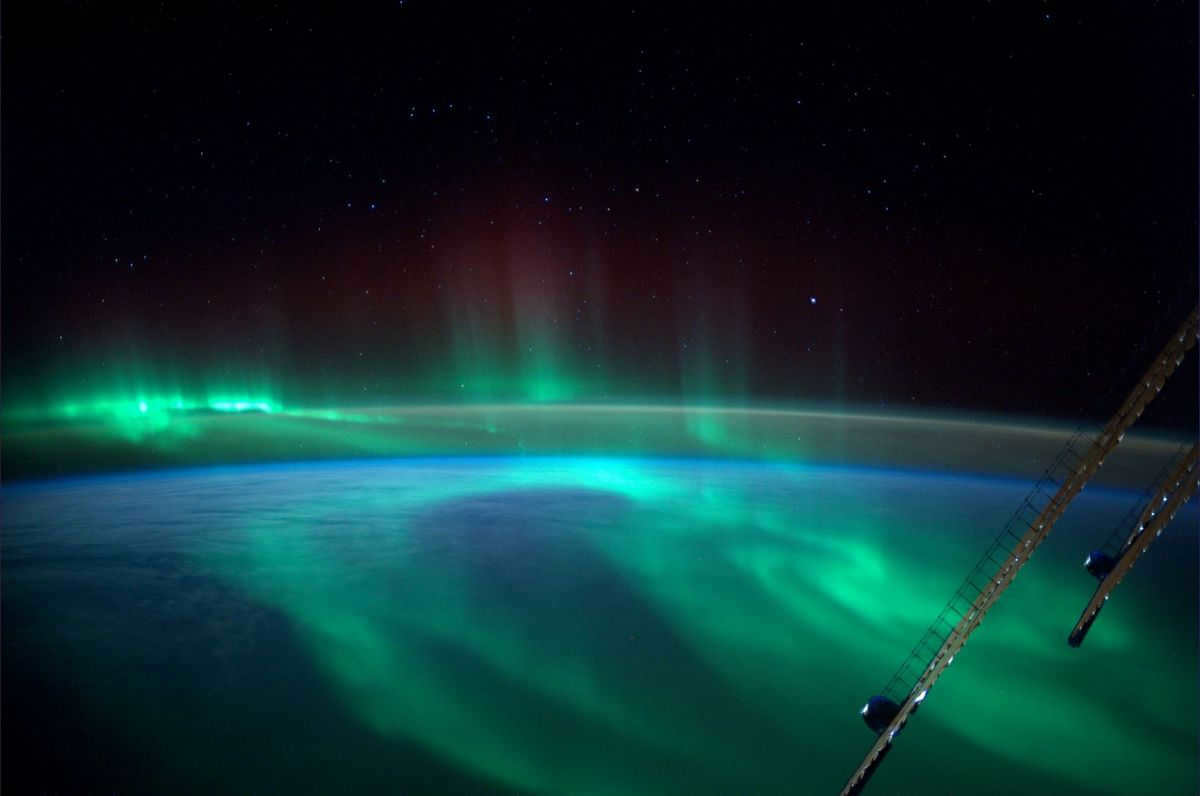
The stratosphere is known for its low levels of water vapor, resulting in minimal cloud cover. These conditions make it an ideal area for aircraft flight due to its stability. Many modern supersonic commercial and military planes operate in this zone, flying approximately 20 kilometers above the Earth’s surface.
Within the same atmospheric region, but at a distance of 40 kilometers from the Earth, unmanned meteosondes, also known as aerostats, gather important data. These vehicles are capable of ascending up to 51.8 kilometers, allowing them to traverse the entire stratosphere and reach its upper boundary.
Temperature Variations
Unlike the troposphere, the stratosphere experiences an increase in air temperature. In the tropopause, which precedes the stratosphere, the decrease in temperature with altitude comes to a halt. This unique characteristic is maintained in the lower section of the stratosphere, which spans altitudes from 11 to 25 km. In this region, the temperature remains relatively constant.
In the upper part of the stratosphere, at altitudes ranging from 25 to 40 km, there is a reversal in temperature trends. In this zone, the temperature increases from -56.5°C to +0.8°C. The warming of the air in this atmospheric region is solely due to the absorption of ultraviolet light by ozone.
When the altitude reaches 40 km, the temperature of the air becomes 0°C (or 273 K). This temperature remains the same until 55 km above the Earth’s surface, where the stratopause, which acts as the dividing line between the stratosphere and the mesosphere, comes to an end.

At the moment, there are extra combined discounts (ranging from 2% to 25%) offered to 58,742 educational establishments. To determine the applicable discount for all staff members of your educational institution, please sign in to your personal Infoworks account.


Advanced training program
Teaching geography in accordance with the requirements of the Federal State Educational Standard (FSES)
We can provide a special offer for your educational institution in addition to the existing discount (the amount of discount will depend on the number of your colleagues who have already enrolled in Infoworks courses).
Currently, we offer additional cumulative discounts ranging from 2% to 25% to a total of 58,742 educational institutions. To find out the applicable discount for all employees of your educational institution, please log in to your personal Infoworks account.


Course for professional growth
Developing fundamental skills in utilizing the territorial approach as a foundation for geographical thinking in line with the FSES.
In addition to this offer, you can also benefit from the discount provided by your educational institution, which will depend on the number of your colleagues who have enrolled in Infoworks courses.
Currently, 58,742 educational institutions are eligible for additional discounts ranging from 2% to 25%. To find out the specific discount applicable to all staff members of your educational institution, please log in to your personal Infoworks account.


Exploring Geography and Embracing a Territorial Perspective in Education
A Breakdown of the Presentation’s Content:

What exactly is the Earth’s atmosphere?
Provided by geography teacher Akhmetyanova E.I.
MJSCU SOSH No. 27 Serov


On the second slide, it is mentioned that the term
"Atmosphere"
was introduced into the Russian language by M.V. Lomonosov.
The word "atmosphere" itself is derived from the Greek word "atmos" which means breath or vapor, and the word "sphere" which means ball.
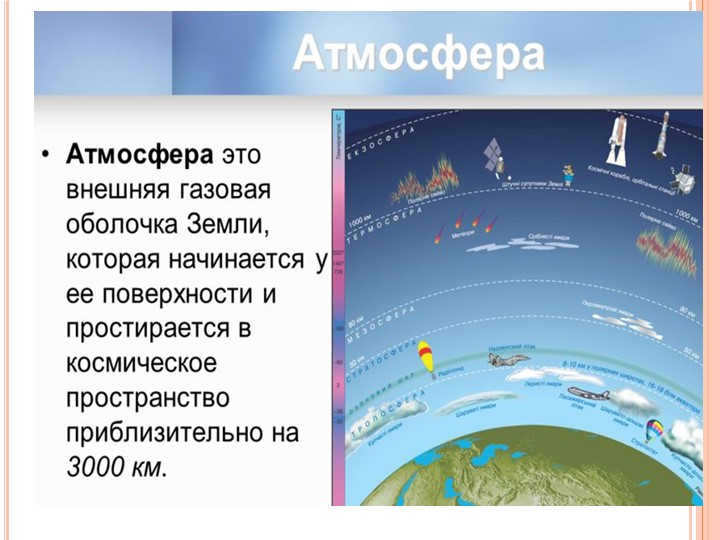
On the fourth slide, there is a presence of 1% of other gases, including argon, neon, and carbon dioxide (0.03%). Additionally, there are water vapor, water droplets, ice crystals, and various impurities such as dust, soot, ash, and sea salt.
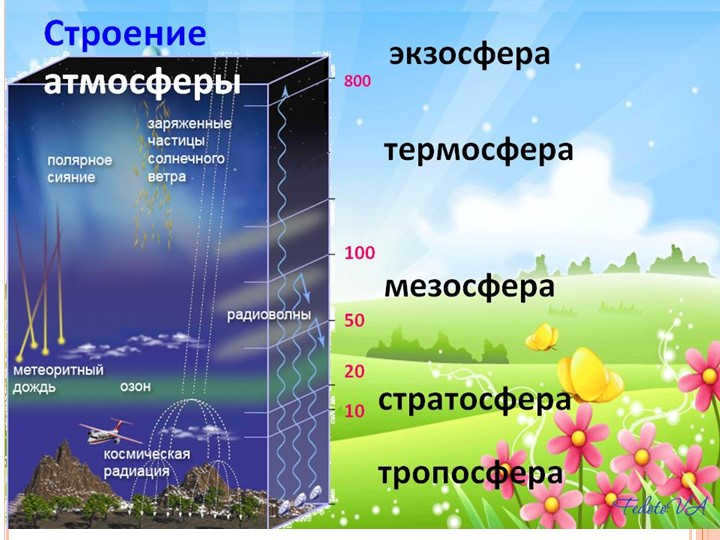
Slide 6 Troposphere
The troposphere is the lowest layer of the atmosphere and is also the densest. It is approximately 18 km thick near the equator and about 10 km thick near the poles.
This layer contains about 90% of all atmospheric air and is also where almost all water vapor is found. It is in the troposphere that weather is formed and where most of the Earth’s weather phenomena occur.
As you move upwards in the troposphere, the air temperature decreases by about 60 degrees Celsius for every kilometer.

Slide 7 of the Stratosphere
Stretches upwards for a distance of 50-55 kilometers from the Earth’s surface;
The stratosphere contains sparse and arid air;
Ozone is the predominant gas found in the stratosphere. It reaches its peak concentration at an elevation of 20-25 km and forms the ozone layer surrounding the Earth.
The ozone layer shields the Earth from detrimental ultraviolet radiation emitted by the Sun.
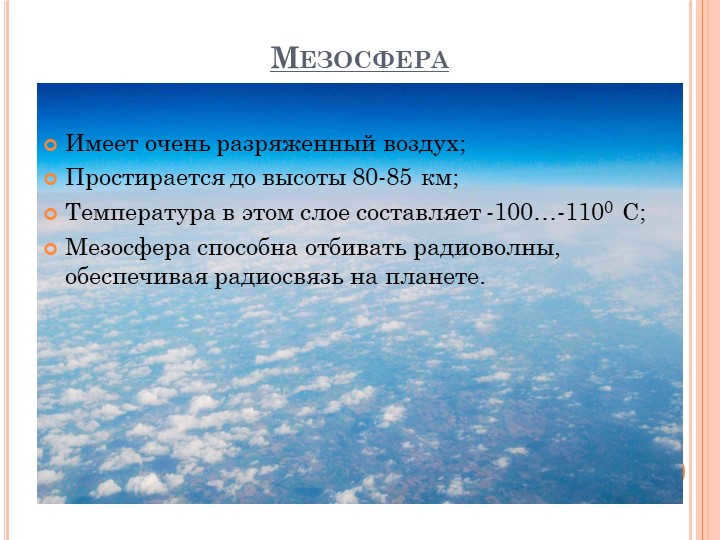
The eighth slide represents the Mesosphere.
It is characterized by extremely thin air;
It stretches up to an altitude of 80-85 kilometers;
The temperature within this layer ranges from -100 to -1100 degrees Celsius;
The Mesosphere has the ability to reflect radio waves, enabling radio communication on Earth.
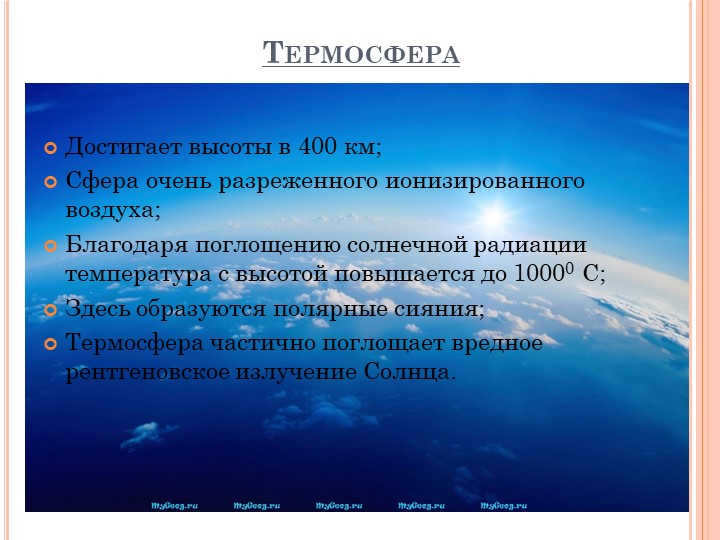

On slide 9, we have the Thermosphere, which extends up to 400 kilometers in altitude. It is characterized by a sphere of extremely thin ionized air. As we move higher, the temperature in this region rises to a staggering 10,000 degrees Celsius. Additionally, the Thermosphere is where we can witness the beautiful phenomenon of polar lights. Another important function of the Thermosphere is that it partially absorbs harmful X-ray radiation emitted by the Sun.

The 10th slide is about the Exosphere, which stretches up to an altitude of 3000 km. It is a scattering sphere that allows gases to enter interplanetary space. The Exosphere contains a small amount of helium and water vapor.
In the vastness of space, humans encounter extreme temperatures, ranging from icy cold to fiery heat. Thanks to innovative protective measures and technological advancements, astronauts and spacecrafts have managed to overcome these harsh conditions. Let’s explore the temperature in space and the factors that influence it.
The speed at which particles move is measured by temperature, while the amount of energy that the particles of an object have is known as heat. In space, there is no clear temperature due to the absence of air for heat transfer.
However, space is not completely devoid of matter. Despite being extremely rarefied, outer space still contains various particles and gases that impact surrounding objects and processes.
Following the Big Bang approximately 13.8 billion years ago, the Universe was filled with high-temperature gas and energetic photons in a hot and dense state. As the Universe expanded, both the gas and photons expanded and cooled down. After approximately 380,000 years, recombination took place, leading to the formation of stable atoms as electrons and protons combined. This event resulted in the liberation of space and the ability of light to travel through the universe without obstruction.
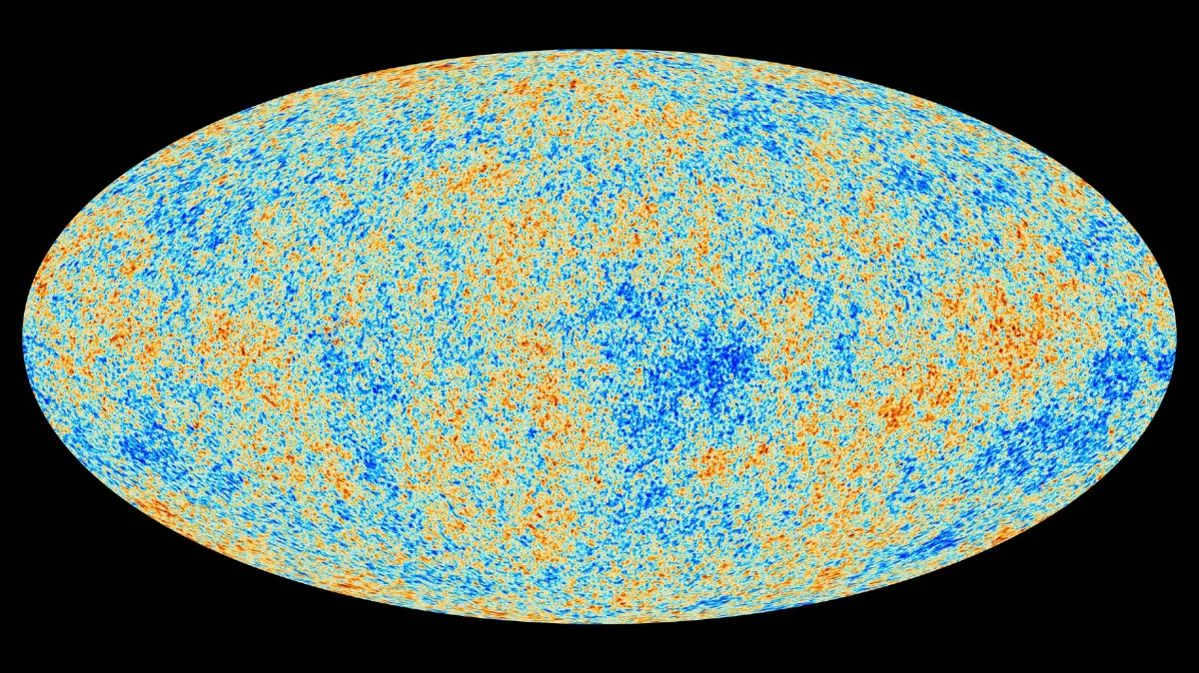
The photons that were released during recombination gradually decreased in temperature as a result of the universe’s expansion. As a consequence, there exists residual radiation throughout the entirety of space, manifesting in the microwave spectrum. The temperature of this radiation measures approximately -270.45°C.
How Heat is Transferred in Space
When it comes to a vacuum environment, where there is an absence of air or other particles that can facilitate heat transfer through conduction and convection, heat can only be transmitted via radiation. Thermal radiation is a form of electromagnetic waves that occur when elementary particles like photons, electrons, and protons combine. Objects in space, including the Sun, emit photons and other elementary particles.
The Sun emits a wide range of electromagnetic waves, including infrared, visible, and ultraviolet radiation. When these rays make contact with the surface of an object, they are absorbed, leading to the generation of heat. The amount of heat generated depends on the surface properties of the object and its position relative to the Sun. If we consider all the energy received from the Sun as 100%, approximately 48% is absorbed by the surface.
What is the current temperature outside the International Space Station (ISS)?
The ISS is continually subjected to sunlight, resulting in drastic temperature variations. The area of the station that is directly exposed to the Sun experiences intense heating, with temperatures soaring to a scorching 121 degrees Celsius. Conversely, the side that is in shadow is subjected to extreme cooling, with temperatures plummeting to a bone-chilling -157 degrees Celsius.

The International Space Station (ISS) ensures a pleasant environment for astronauts by utilizing heating and cooling systems that effectively regulate the temperature inside the station, keeping it within the comfortable range of 20-25°C.
Humans can experience harsh temperatures in outer space, despite the fact that the absence of air or particles prevents the transfer of heat through conduction or convection. Heat loss through contact with the environment is also minimal. To combat this, space suits and vehicles are designed with insulation to minimize heat loss. These suits also feature temperature control systems that include both heating and cooling. To protect against extreme heat or cold, space suits are typically insulated with layers of fabric, such as neoprene, gore-tex, and dacron, and are covered with reflective outer layers made of mylar or white fabric to reflect sunlight.

Changes in Temperature as Distance from Earth Increases
The temperature varies in different layers of the atmosphere:
The troposphere spans from 6 to 20 kilometers above the Earth’s surface. The average temperature near the Earth’s surface is 15°C. At the upper boundary of the troposphere, the temperature drops to approximately -60°C.
The stratosphere starts at the highest level of the troposphere and extends up to 50 kilometers above the Earth’s surface. Temperatures range from -51°C at the edge of the troposphere to -15°C at the top. The temperature at this level is influenced by the ozone layer, which absorbs ultraviolet rays from the sun.
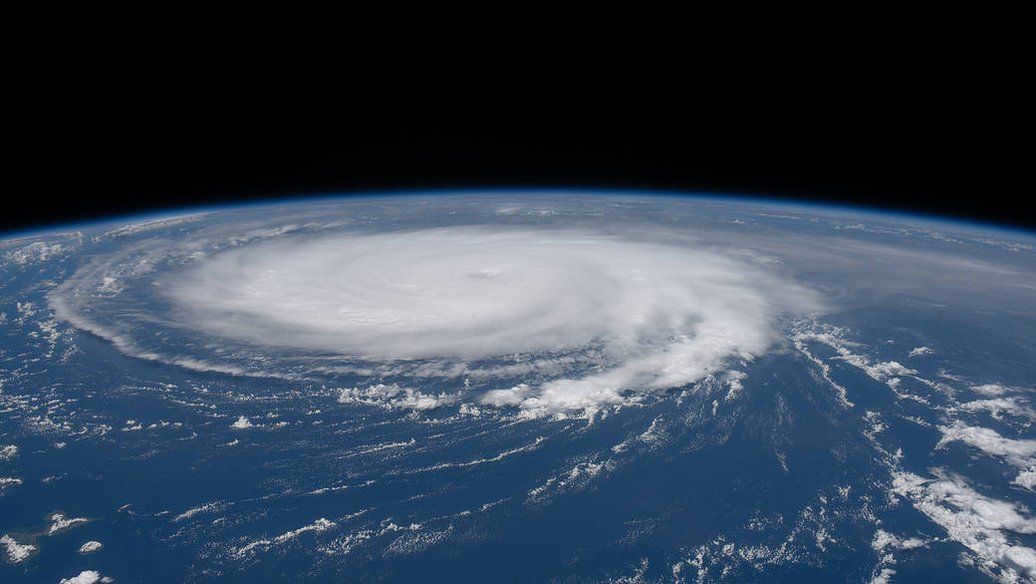

The mesosphere covers the region from the stratospheric boundary up to 85 kilometers above the Earth’s surface and is characterized by the coldest temperatures in the Earth’s atmosphere. The temperature in the mesosphere varies from -15°C at the stratospheric boundary to -120°C at the upper boundary.
The thermosphere begins above the mesosphere and extends to a height of 500 to 1000 kilometers above the Earth’s surface. In this region, the temperature shows a significant increase, ranging from -120°C at the upper boundary of the mesosphere to 2000°C at the upper boundary of the thermosphere, due to the absorption of ultraviolet and X-ray radiation from the Sun.
The exosphere is a region without a distinct boundary that gradually merges with outer space. According to some experts, it extends approximately 100,000 kilometers above the Earth’s surface. Due to the rarity of air molecules in this outermost layer of the atmosphere, temperatures can reach as high as 1,500 degrees. This is because there is limited heat transfer from the surrounding environment.
When it comes to safeguarding against extreme temperatures in space, spacecraft utilize insulating materials with low thermal conductivity. One crucial material used is called Kapton, which is applied in multiple layers to cover the most critical components. These layers are separated by another insulating material called Mylar, which helps prevent heat loss. Additionally, spacecraft are equipped with heating systems to provide supplementary thermal protection.
To safeguard against the intense heat of outer space, specialized coatings and shields are utilized to both reflect and absorb solar radiation. Additionally, cooling systems are employed to effectively dissipate excess heat and maintain the ideal temperature conditions within the spacecraft.
Another vital aspect of protection involves the strategic placement of components and the design of the vehicle itself. Components that are susceptible to extreme temperatures are strategically positioned closer to the center of the spacecraft or shielded by insulating materials to mitigate the impact of cold or heat.
The Boomerang Nebula, located 5,000 light-years away in the Centaurus constellation, holds the distinction of being the coldest place in the entire universe. With a temperature of -272°C, it is only 1 degree above absolute zero, the lowest possible temperature. Even the background glow from the Big Bang, which registers at -270°C, is warmer than this frigid nebula. Remarkably, the Boomerang Nebula is the only known object to have a temperature that falls below the background radiation.
This celestial wonder is a relatively young planetary nebula that features a dying red giant star at its core. Once similar to our Sun, this star has transformed into a gradually dimming white dwarf, surrounded by a protoplanetary nebula. This nebula exhibits a symmetrical shape, resembling two wings, which are formed by matter that was expelled from the star.

The central star of the nebula is losing mass at an alarming rate. In the past 1,500 years, it has shed one and a half times the mass of the sun. As the star collapses, it expels matter in the form of plasma streams from its outer layers. If the expulsion happens quickly enough, the thermal energy of the matter transforms into kinetic energy, causing the gas to expand. In the case of the Boomerang Nebula, the stellar wind, which is the flow of gas from the central star, travels at an astonishing speed of 164 km/s.
As a result of the rapid expansion of the gas, the temperature of the nebula plummets to an incredibly low level. This is due to the adiabatic cooling effect, where the gas expands without exchanging heat with its surroundings.
Temperature variations among the planets in the solar system
The temperature on each planet in our solar system varies depending on its distance from the Sun. Interestingly, Venus stands out as the exception to this pattern as it is the hottest planet. This is due to its unique atmospheric composition, which includes a significant amount of carbon dioxide. The dense atmosphere of Venus traps heat, creating a powerful greenhouse effect and resulting in a thick layer of warmth enveloping the planet.

The average temperature of the planets in the solar system is as follows:
- Mercury – 167 degrees Celsius
- Venus – 464 degrees Celsius
- Earth – 15 degrees Celsius
- Mars – minus 65 degrees Celsius
- Jupiter – minus 110 degrees Celsius
- Saturn – minus 140 degrees Celsius
- Uranus – minus 195 degrees Celsius
- Neptune – minus 200 degrees Celsius
- The dwarf planet Pluto – minus 225 degrees Celsius
Here’s something else that caught my attention:

The composition and structure of the Earth’s atmosphere are determined by various factors. However, human activity has the most significant impact on this multi-layered gas shell that surrounds our planet. The atmosphere is a complex system, consisting of different layers that are constantly changing. These layers are essential for the existence of life on Earth.
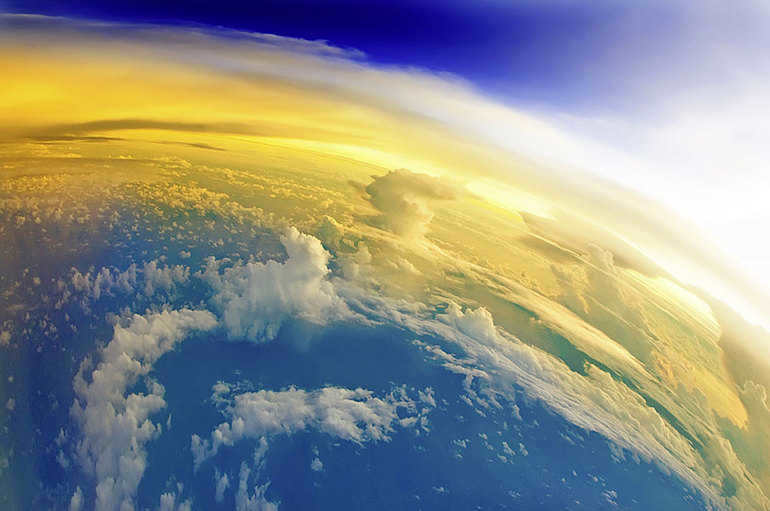
Essential characteristics of the atmosphere
The atmosphere plays a critical role in safeguarding living organisms. Without its protective shield, meteorites would bypass the burning process and directly collide with the Earth’s surface. Moreover, the sun’s ultraviolet radiation poses a significant danger by posing a potential threat to the existence of plant and animal life. Fortunately, the various layers of the atmosphere create a conducive environment for numerous species, ensuring their survival and well-being.
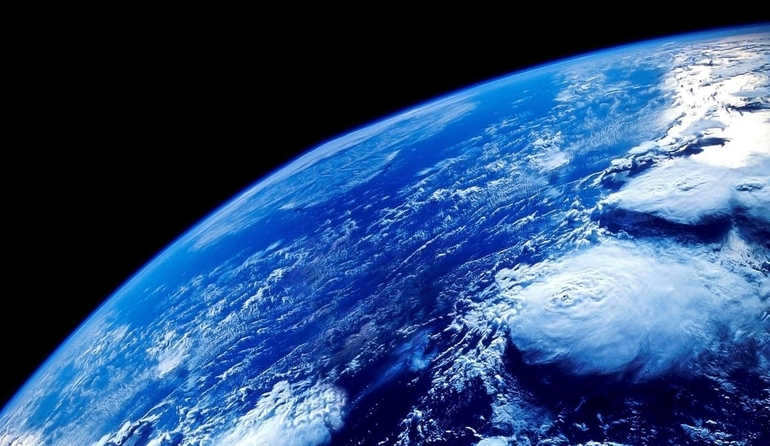
- The first layer is called the troposphere.
- Next comes the stratosphere.
- After that is the mesosphere.
- Then we have the thermosphere.
- Lastly, there is the exosphere.
- The ionosphere is also considered part of the atmosphere.
This sequence of layers rotates along with the planet, while the layers above them move at a different speed. The highest layer is known as the exosphere, although some scientists also classify the ionosphere as part of the atmosphere.
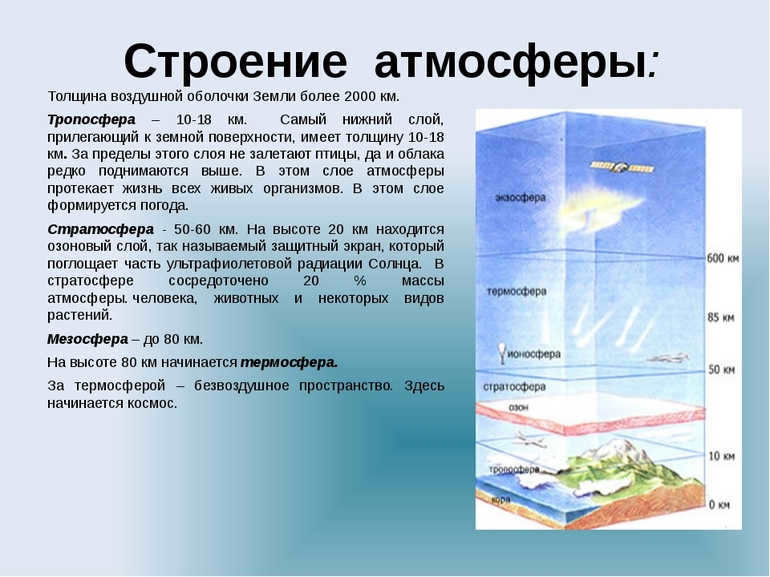
Air is a mixture of gases that is composed of various elements. In the lower layers of the atmosphere, there are 12 different species of gases. As you go higher in altitude, you can find almost all the elements from Mendeleev’s chemical table. All of these elements exist in a gaseous state.
Oxygen is the most abundant gas in the atmosphere, and it gives the air its blue color. This is because air is highly effective at scattering short rays, which make up the blue part of the spectrum. It’s interesting to note that when viewed from space, the Earth appears blue, but from a great distance, it appears as a blue dot. In addition to oxygen, the other elements found in the composition of the air include:
- hydrogen;
- helium;
- neon;
- krypton;
- argon;
- radon;
- xenon.
During volcanic eruptions, noble gases infiltrate the surface and ascend to the upper layers. The composition and structure of the atmosphere undergo constant change, but these processes have negligible impact on a global scale.
Even if the oxygen level were to decrease by a hundredfold, it would not result in the destruction of the ozone layer. However, human activities pose a threat not only to the planet’s existence, but also to civilization itself. Presently, smog clouds are persistently present over several major cities, clearly visible from outer space. Scientists are also concerned about the increasing size of ozone holes, which are growing larger with each passing year.
Characteristics of the troposphere in terms of physical properties
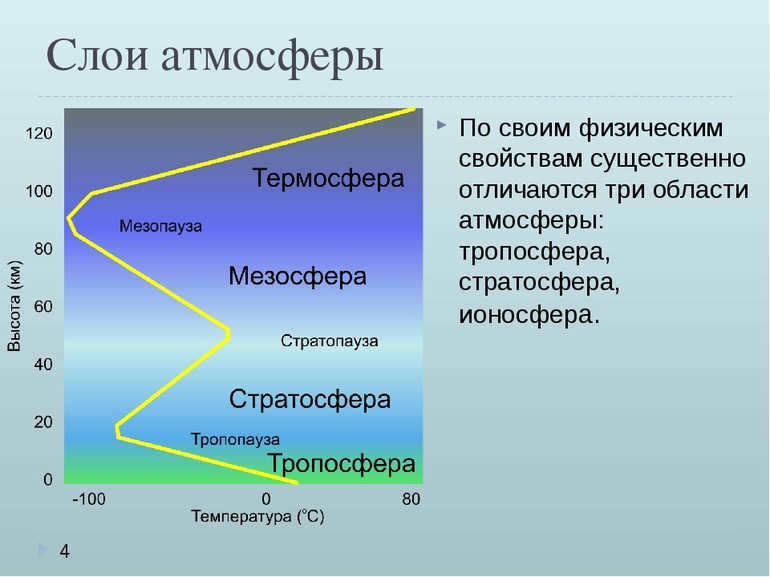
Each layer of the Earth’s atmosphere possesses unique characteristics. The troposphere, which is the closest layer to the planet’s surface, is the most dense. Its vertical extent varies depending on the location, with a range of 7 km at the poles to 20 km at the equator. This discrepancy is a result of the Earth’s oblate shape, influenced by centrifugal force. Furthermore, the size of the troposphere is directly proportional to the temperature of the air, meaning that warmer air results in a larger troposphere.
The troposphere is the most productive and dynamic layer of the atmosphere. It is where clouds are formed, winds are generated, and cyclones and anticyclones are created. Additionally, the troposphere is home to a diverse range of species that make up the living world. As altitude increases, the air temperature in this layer decreases by 0.5-0.7 degrees Celsius for every 100 meters. Similarly, wind speed changes by 2-3 km/s for every 1 km of altitude.
At the tropopause, the temperature remains constant. The lower part of the troposphere forms a boundary layer that interacts with the lithosphere. This boundary layer serves to accumulate and transfer heat to higher altitudes. It also facilitates water exchange. In fact, a complete turnover of water occurs in the boundary layer every 8-12 days. As a result, the troposphere acts as a massive filter, regulating heat and water in the atmosphere.
One part of the atmosphere that is worth mentioning is the homosphere, which is the area where individuals are situated and carry out their activities.
Explanation of the stratosphere
The stratosphere is a layer of air that starts at around 50 km above the equator and approximately 8 km above the poles. The term “stratus” comes from the Greek word meaning “layer, planking.” This region is very thin and contains very few water particles. The air pressure in the upper part of the stratosphere is 100 times lower than at the Earth’s surface, while in the lower part it is 10 times lower.
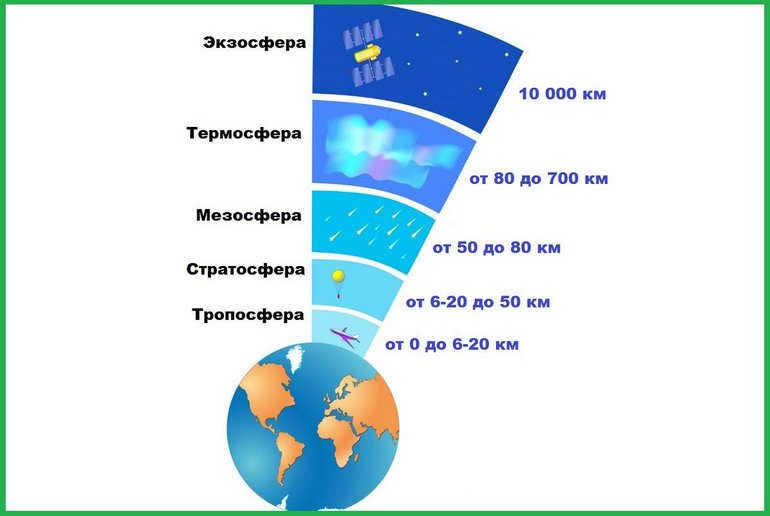

The temperature of the atmosphere increases as you go higher in altitude. In the lower part of the atmosphere, the temperature is -56 degrees Celsius, while in the upper part it ranges from -1 to 0 degrees. The heating of the air stops at the stratopause, which is the boundary layer between the mesosphere and the stratosphere.
The stratosphere is the region where supersonic airplanes and passenger airliners fly. This altitude is chosen because the lower stratosphere has stable air currents and lower temperatures, which helps to reduce fuel costs. Moving at this altitude also reduces aerodynamic drag.
Weather probes are currently deployed in the stratosphere, suspended from massive balloons. Their primary objective is to gather valuable data about the condition of the troposphere and the ongoing changes.
Inhabitants of the stratosphere include various microorganisms, such as aeroplankton bacteria. However, it is not only these tiny organisms that can survive at such extreme altitudes. There has been an incident where a large vulture got sucked into an airplane engine. Additionally, it is known that migrating ducks fly over Mount Everest during their seasonal flights.
The world record for the highest altitude stay was achieved by American Alan Eustace, the vice-president of Google. He reached a height of 41 kilometers and then proceeded to parachute down. To detach from the balloon, a small explosive device had to be detonated. During the free fall, Eustace reached a speed of 1342 km/h, surpassing the speed of sound.
The ozone layer acts as a barrier between the mesosphere and the stratosphere. It plays a crucial role in shielding the earth’s surface from harmful ultraviolet rays, preventing them from reaching the ground and causing damage. Moreover, the ozone layer creates an inhospitable environment above it, effectively eliminating any possibility of life, even for the most resilient bacteria and viruses. This is due to the presence of unfavorable conditions that are lethal to all living organisms:
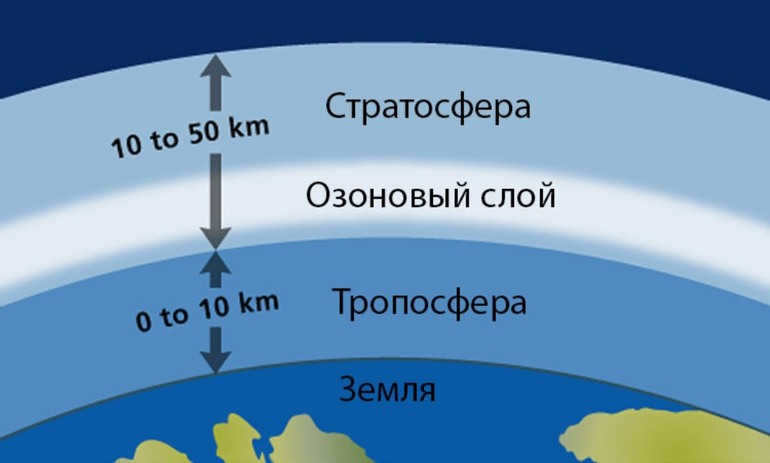

The ozone layer formed thanks to bacteria that have been producing oxygen for thousands of years. As these molecules rise to higher layers, they undergo a photochemical reaction, converting O2 molecules into O3.
Ozone is a substance created by ultraviolet light. It serves as a protective shield for all life on our planet, blocking out harmful radiation. By absorbing sunlight, ozone warms itself and raises the temperature of the surrounding atmosphere. This gas plays a role in maintaining a favorable microclimate on Earth.
Characteristics of the mesosphere
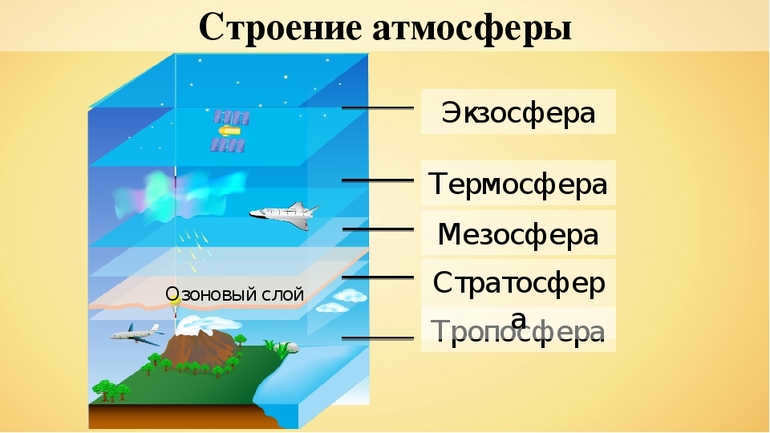
The mesosphere is a layer situated between 45 and 90 kilometers above the Earth’s surface. Its upper portion is known as the mesopause, which is the coldest spot, with temperatures dropping to -143 degrees Celsius.
This section of the atmosphere remains relatively unexplored due to the extremely low gas pressure, which is thousands of times lower than what is experienced at ground level. Balloons that ascend to a certain height are unable to go any higher and instead hover in place. Additionally, jet-powered aircraft cannot be used for studying the mesosphere, as the principles of their propulsion lose their efficacy in extremely rarefied gas conditions. The aerodynamics of their bodies and wings become irrelevant.
The mesosphere cannot be effectively studied using suborbital probes and satellites due to the pressure that slows them down and sometimes causes them to burn. Although the pressure is very low, it still hinders their movement and results in vehicle burnouts.
Meteorites also experience combustion in this layer, creating a distinctive glow visible to ground observers.
Furthermore, the Earth accumulates between 100 and 9-10 thousand tons of space dust on a daily basis. While these particles have some impact on rain formation, they are unable to significantly alter atmospheric circulation.
Thermosphere and exosphere
can be rephrased as
The Thermosphere and Exosphere
.
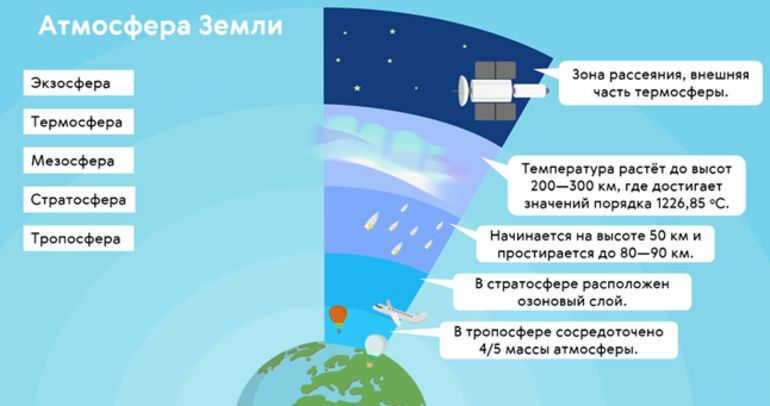
The Earth’s atmosphere extends to a height of approximately 100 km, and at this point, there is a well-defined boundary that separates the planet from outer space. This boundary is known as the Karman Line. Gases still exist above this height, but their presence is minimal. Traveling at this distance from the Earth’s surface is considered to be space travel.
The Karman Line also marks the lower boundary of the thermosphere, which is the highest layer of the atmosphere. The thermosphere extends up to 800 kilometers above sea level and experiences temperatures of up to 1800 degrees Celsius. To put this into perspective, it’s worth noting that iron melts at a temperature of 1538 °C.
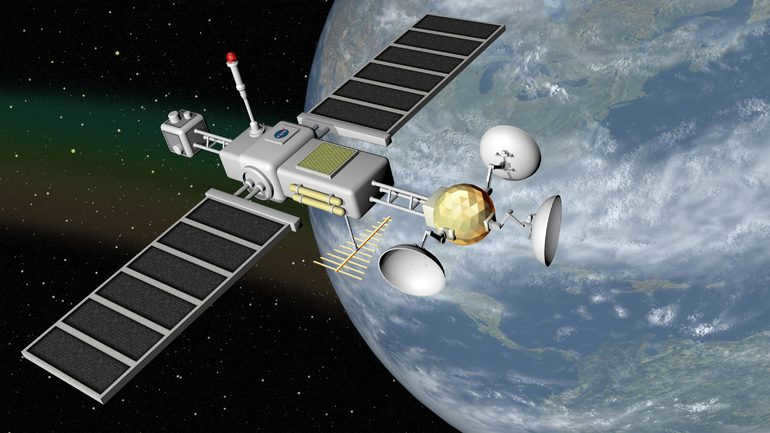
Nevertheless, spacecraft in the thermosphere do not experience destruction as the gas concentration is minimal. Individual particles possess immense energy, yet they remain widely dispersed. The spacecraft exist within a vacuum, necessitating the dissipation of excess heat produced by engine and machinery operation. This heat dissipation is accomplished through the utilization of radiators, which are present on all spacecraft.
The exosphere marks the final layer of the atmosphere. Its lower boundary is positioned at an altitude of 700-800 kilometers. This region of the atmosphere is exceptionally tenuous and is primarily composed of hydrogen atoms. Nitrogen and oxygen ions are present in small quantities, comprising less than one-hundredth of a percent.
Stretching across a distance of 100,000 kilometers, the exosphere seamlessly transitions into the geocorona. In contrast to the layers below it in the atmosphere, the exosphere contains particles at a concentration millions of times lower.
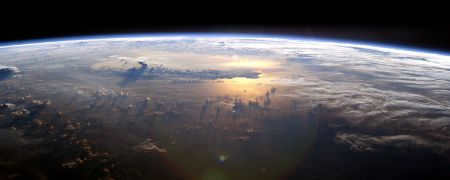
The atmosphere (derived from the Greek word ἀτμός – vapor and σφαῖρα – ball) is the gaseous layer (geosphere) that surrounds the planet Earth. It covers the hydrosphere and partially the crust on its inner surface, while its outer surface borders the near-Earth region of outer space.
The scientific field that studies the atmosphere, combining physics and chemistry, is known as atmospheric physics. The atmosphere plays a crucial role in determining the weather conditions on the Earth’s surface, with meteorology focusing on the study of weather patterns and climatology exploring long-term climate variations.
- 1 Structure of the atmosphere
- 1.1 Troposphere
- 1.2 Tropopause
- 1.3 Stratosphere
- 1.4 Stratopause
- 1.5 Mesosphere
- 1.6 Mesopause
- 1.7 Thermosphere
- 1.8 Exosphere (sphere of dispersion)
- 4.1 The Origins of Life and the Presence of Oxygen
- 4.2 The Composition of the Modern Atmosphere
- 4.2.1 Maintaining Oxygen Levels
- 4.2.2 The Role of Nitrogen
- 5.1 The Troposphere
- 5.2 The Stratosphere
- 5.3 The Mesosphere
- 5.4 The Thermosphere
- 5.5 The Exosphere
Composition of the atmosphere [ edit correct code ]
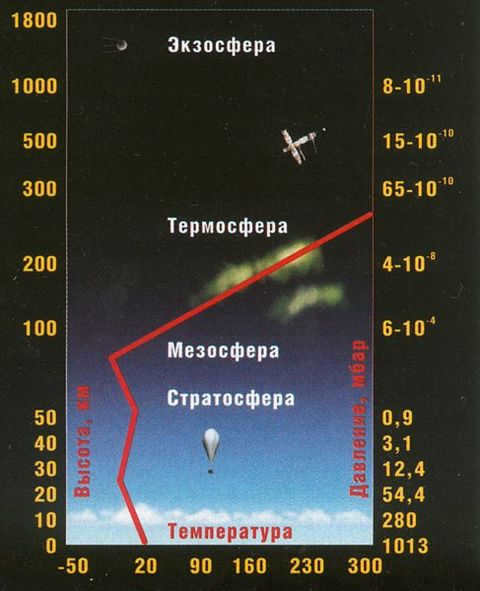
Troposphere [ edit correct code ]
Main article: Troposphere
Its upper boundary is located at an altitude of 8-10 km in polar regions, 10-12 km in temperate regions, and 16-18 km in tropical regions; it is lower in winter than in summer.
The troposphere is the lower and main layer of the atmosphere. It contains over 80% of the total mass of atmospheric air and approximately 90% of all water vapor present in the atmosphere. The troposphere experiences strong turbulence and convection, leading to the formation of clouds and the development of cyclones and anticyclones. Temperature decreases as altitude increases, with an average vertical gradient of 0.65°/100 m.
Main article: Tropopause
The tropopause is a layer that separates the troposphere from the stratosphere. Its thickness can range from a few hundred meters to 1-2 km. The height of the tropopause varies depending on the season and the movement of cyclones and anticyclones. In winter, the tropopause is lower than in summer. The average temperature above the pole during winter is approximately -65°C, while in summer it is around -45°C. Above the equator, the temperature remains around -70°C throughout the year.
Stratosphere [ edit edit code ]
Main article: Stratosphere
The upper limit of the atmosphere is found at a height of 50-55 km. As we ascend, the temperature rises to approximately 0 °C. There is minimal turbulence, very little water vapor, and a higher concentration of ozone compared to the layers below and above it (with the highest concentration of ozone found at altitudes of 20-25 km).
Stratopause [ edit edit code ]
Main article: Stratopause
The layer between the stratosphere and the mesosphere in the atmosphere is known as the stratopause. In terms of temperature distribution, there is a peak (around 0 °C).
Mesosphere [ edit edit code ]
Main article: Mesosphere
The upper boundary of the mesosphere is located at an altitude of 80-85 km. As altitude increases, the temperature decreases with an average vertical gradient of (0.25-0.3)°/100 m. The main energy process in this region is radiant heat exchange. Various photochemical processes involving free radicals and vibrationally excited molecules contribute to atmospheric luminescence.
Mesopause [edit edit code]
Main article: Mesopause
The mesopause is a transitional layer located between the mesosphere and the thermosphere. In the vertical temperature distribution, there is a minimum temperature of about -90°C.
Thermosphere [edit edit code]
Main article: Thermosphere
The thermosphere extends up to approximately 800 km above the Earth’s surface. As altitude increases to around 200-300 km, the temperature rises significantly, reaching values of about 1500 K. Beyond this point, the temperature remains relatively constant. Within the thermosphere, the main regions of the ionosphere, where air ionization occurs due to solar radiation and cosmic radiation, are found. At altitudes above 300 km, atomic oxygen is the dominant component.
Exosphere (scatter sphere) [edit code]
Main article: Exosphere
The outer layer of the atmosphere, known as the exosphere, is where fast-moving light hydrogen atoms have the ability to escape into outer space. This region is characterized by extremely high temperatures, reaching levels beyond 3000 K. As one moves further away from Earth (approximately 2-3 thousand kilometers), the exosphere becomes dominated by helium atoms. At even lower altitudes, oxygen atoms also become a significant component of the exosphere.
Physical properties [ edit correct code ].
The atmosphere’s thickness measures approximately 1500 km from the Earth’s surface. The total air mass is (5.1-5.3)×10 15 tons. The molecular weight of completely dry air is 28.966. At sea level and 0°C, the pressure is 1013.25 hPa; the critical temperature is -140.7°C; the critical pressure is 3.7 MPa; Cp is 1.0048×10³ J/(kg-K) at 0°C, and Cv is 0.7159-10³ J/(kg-K) at 0°C. The solubility of air in water is 0.036% at 0°C and 0.22% at 25°C.
The majority of the Earth’s atmosphere is composed of gases and a variety of contaminants, including dust, water droplets, ice crystals, sea salts, and combustion byproducts.
The levels of gases that comprise the atmosphere remain relatively stable, with the exception of water (H2O) and carbon dioxide (CO2).
| Nitrogen | 78.084 | 75.50 |
| Oxygen | 20.946 | 23.10 |
| Argon | 0.932 | 1.286 |
| Water | 0.5—4 | — |
| Carbon dioxide | 0.032 | 0.046 |
| Neon | 1.818×10 ^-3 | 1.3×10 ^-3 |
| Helium | 4.6×10 ^-4 | 7.2×10 ^-5 |
| Methane | 1.7×10 ^-4 | — |
| Krypton | 1.14×10 ^-4 | 2.9×10 ^-4 |
| Hydrogen | 5×10 ^-5 | 7.6×10 ^-5 |
| Xenon | 8.7×10 ^-6 | — |
| Nitrous oxide | 5×10 ^-5 | 7.7×10 ^-5 |
In addition to the gases listed in the table, the atmosphere is composed of various other gases such as SO2, CH4NH3, CO, hydrocarbons, HCl, HF, Hg, I vapors, as well as NO and numerous other gases in small amounts.2as well as NO and numerous other gases in small amounts. The troposphere also contains a significant concentration of suspended solid and liquid particles, known as aerosol.
Formation of the Earth’s Atmosphere: A Historical Perspective
Currently, the scientific community has yet to achieve complete accuracy in tracing the various stages of the Earth’s formation. However, the prevailing theory suggests that the Earth’s atmosphere has undergone four distinct compositions throughout its history. Initially, it consisted primarily of light gases, namely hydrogen and helium, which were captured from interplanetary space. This stage is commonly referred to as the “primary atmosphere”.
Subsequently, intense volcanic activity led to the introduction of other gases into the atmosphere, such as hydrocarbons, ammonia, and water vapor. This marked the emergence of a “secondary atmosphere” with a reductive nature.
The formation of the Earth’s atmosphere was then influenced by several key factors:
- The continuous leakage of hydrogen into interplanetary space;
- Chemical reactions take place in the atmosphere due to the impact of ultraviolet radiation, thunderstorm discharges, and various other factors.
Over time, these factors have contributed to the development of a tertiary atmosphere, which is characterized by a lower concentration of hydrogen and a higher concentration of nitrogen and carbon dioxide. These gases are formed through chemical reactions involving ammonia and hydrocarbons.
The Emergence of Life and Oxygen [ edit correct code ]
With the appearance of living organisms on Earth, the composition of the atmosphere started to change as a result of photosynthesis, which involved the release of oxygen and absorption of carbon dioxide. Nevertheless, there is evidence (such as the analysis of the isotopic composition of atmospheric oxygen and oxygen released during photosynthesis) that suggests the geological origin of atmospheric oxygen.
Initially, oxygen was consumed for the oxidation of reduced compounds, such as hydrocarbons and the oxide form of iron found in the oceans. The oxygen content in the atmosphere remained relatively stable during this stage. However, it started to increase towards the end of this stage.
Throughout the Phanerozoic era, the composition of the atmosphere and its oxygen levels experienced notable transformations. These changes have been linked to global extinctions, glaciations, and other worldwide processes. The decrease in atmospheric oxygen content and the establishment of its equilibrium can be attributed to the emergence of heterotrophic organisms and volcanic activity. These factors ultimately shaped the current Quaternary atmosphere with its oxidizing properties.
In more recent times, human activity has played a significant role in the evolution of the atmosphere. Due to human activities, there has been a consistent and substantial increase in carbon dioxide levels in the atmosphere. This increase is primarily caused by the combustion of hydrocarbon fuels that have been accumulated over previous geological epochs. These fuels were mainly generated through various volcanic eruptions.
All of the processes that shaped the Earth’s atmosphere continue to operate today. However, in the short term, there are other factors that are important.
Oxygen balance [ edit correct code ]
Contrary to popular belief, the levels of oxygen and nitrogen in the atmosphere are not significantly affected by forests. Essentially, forests cannot have a significant impact on the amount of CO2 in the atmosphere because they do not store carbon. The majority of carbon is released back into the atmosphere through the oxidation of fallen leaves and trees. A healthy forest is in balance with the atmosphere and releases as much oxygen as it absorbs. Tropical forests often absorb oxygen, while taiga forests release it. The levels of carbon dioxide in the atmosphere are influenced by swamps and oceans. Organic matter accumulated by these ecosystems over geological time periods transforms into coal, oil, and gas.
In the 1990s, experiments were conducted in an attempt to create a closed ecological system called “Biosphere 2.” However, this endeavor proved unsuccessful as the system failed to maintain a stable air composition. The presence of microorganisms resulted in a decrease in oxygen levels and an increase in carbon dioxide.
The Role of Nitrogen
Large amounts of N2 are formed through the oxidation of the primary ammonia-hydrogen atmosphere by molecular O2. Nitrogen is further oxidized to NO in the upper atmosphere and is utilized in various industries. Additionally, nitrogen-fixing bacteria play a crucial role in binding N while N2 is released into the atmosphere through denitrification of nitrate and other nitrogen-containing compounds.
Nitrogen N2 is a gas that lacks reactivity and only undergoes chemical reactions under particular circumstances, such as those involving lightning discharge. Cyanobacteria and certain bacteria, such as those forming a symbiotic relationship with leguminous plants, can convert nitrogen into a form that is usable by living organisms.
The process of oxidizing molecular nitrogen through electrical discharges is employed in the production of nitrogen fertilizers on an industrial scale. This process has also contributed to the formation of unique nitrate deposits found in the Atacama Desert in Chile.
Oxygen [ edit correct code ]
The composition of the atmosphere underwent a radical transformation when living organisms appeared on Earth. This transformation was a result of photosynthesis, which involved the release of oxygen and the absorption of carbon dioxide. At first, oxygen was used to oxidize various compounds such as ammonia, hydrocarbons, and iron oxide found in the oceans. As this process continued, the oxygen levels in the atmosphere began to rise. Over time, the atmosphere we have today, with its oxidizing properties, was formed. However, this transformation had significant and sudden effects on many processes in the atmosphere, lithosphere, and biosphere, leading to what is known as the Oxygen Catastrophe.
Throughout the Phanerozoic era, there were notable fluctuations in the atmosphere’s composition and oxygen levels. These changes were closely tied to the rate at which organic sedimentary rocks were being deposited. Consequently, during periods characterized by the accumulation of coal, it is believed that the oxygen content in the atmosphere surpassed that of the present day.
Carbon dioxide [ edit correct code ]
Volcanic activity and chemical processes in the Earth’s envelopes, as well as the intensity of biosynthesis and decomposition of organics in the Earth’s biosphere, determine the atmospheric content of CO2. The atmospheric air contains carbon dioxide, nitrogen, and water vapor, which are responsible for virtually all of the planet’s current biomass (approximately 2.4⋅10 12 tons). The organic matter found in the ocean, swamps, and forests undergoes conversion into coal, oil, and natural gas.
The solubility of carbon dioxide in the water of the oceans, which is influenced by the temperature and acidity of the water, also affects the content of this gas in the atmosphere.
Sources of noble gases include volcanic eruptions and the radioactive decay of elements. Compared to space and other planets, the Earth, especially its atmosphere, has a lower abundance of noble gases. This is true for helium, neon, krypton, xenon, and radon. However, the concentration of argon is unusually high, making up nearly 1% of the atmospheric gas composition. This abundance can be attributed to the vigorous decay of the radioactive isotope potassium-40 in the Earth’s interior.
Photosynthesis and the world’s oceans absorb vast quantities of CO2. This gas is released into the atmosphere through the breakdown of carbonate rocks and plant and animal matter, as well as through volcanic activity and human actions. In the past century, the atmospheric CO2 levels have risen by 10%, primarily due to the burning of fuels which has contributed 360 billion tons. If the current rate of fuel combustion continues, the CO2 levels in the atmosphere could double in the next 50-60 years, potentially resulting in global climate change.
Aerosol pollution in the atmosphere arises from both natural sources, such as volcanic eruptions, dust storms, the release of sea water droplets and plant pollen, and human activities, including mining operations, the burning of fuels, and cement manufacturing. The extensive and widespread release of solid particles into the air could potentially contribute to alterations in the Earth’s climate.
The weather and climate determine the physical condition of the atmosphere. The primary factors that define the atmosphere are the density of the air, the pressure, the temperature, and the composition. As altitude increases, the air density and atmospheric pressure decrease. The vertical structure of the atmosphere exhibits varying temperature and electrical properties, as well as different states of the air. The atmosphere is divided into distinct layers based on temperature, including the troposphere, stratosphere, mesosphere, thermosphere, and exosphere (also known as the scattering sphere). The transitional areas between these layers are known as the tropopause, stratopause, etc., respectively.
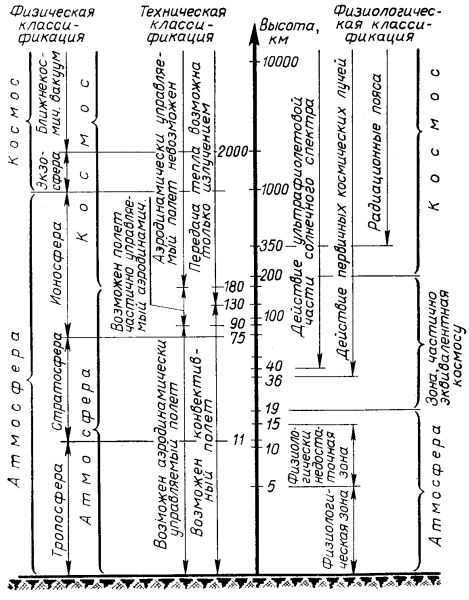
The Troposphere [ edit the correct code ]
The troposphere is the first and most extensively studied layer of the atmosphere, ranging from 8-10 km in height in polar regions, up to 10-12 km in temperate latitudes, and reaching heights of 16-18 km at the equator. It is within the troposphere that approximately 80-90% of the total mass of the atmosphere is contained, as well as nearly all of the water vapor. As one ascends through the troposphere, the temperature drops by an average of 0.65° for every 100 m of elevation, ultimately reaching a temperature of 220 K (-53°C) in the uppermost part. This upper layer of the troposphere is referred to as the tropopause.
The stratosphere is a layer of the atmosphere that can be found at altitudes ranging from 11 to 50 km. It is characterized by minimal changes in temperature within the 11-25 km layer (known as the lower stratosphere layer), and a temperature increase within the 25-40 km layer from -56.5 to 0.8°C (known as the upper stratosphere layer or the inversion region). Once it reaches a temperature of approximately 273 K (around 0°C) at an altitude of roughly 40 km, the temperature remains constant until reaching an altitude of about 55 km. This region with a constant temperature is referred to as the stratopause and serves as the boundary between the stratosphere and the mesosphere.
Within the stratosphere, a significant portion of ultraviolet radiation in the short-wave range (180-200 nm) becomes confined, leading to the conversion of short-wave energy. As a result of these rays, magnetic fields undergo alterations, molecules break apart, ionization transpires, and various gases and chemical compounds are generated anew. These phenomena can be witnessed in the manifestations of the aurora borealis, zarnitsa, and other luminous displays.
There is hardly any water vapor present in the stratosphere.
Mesosphere [ edit edit code ]
The mesosphere commences at a height of 50 km and stretches to 80-90 km. The temperature of the air decreases to -88°C up to an elevation of 75-85 km. The mesopause marks the upper limit of the mesosphere.
The ionosphere, also known as the thermosphere, is the atmospheric layer that comes after the mesosphere. It begins at an altitude of 80-90 km and extends up to 800 km. The temperature in this region rises rapidly and steadily, reaching several hundred to even thousands of degrees.
Exploring the Exosphere
The exosphere is the outermost region of the thermosphere, located above 800 km. It is a zone of dispersion where gas particles are extremely rarefied. From the exosphere, these particles can leak into interplanetary space, leading to dissipation.
At altitudes ranging from approximately 2000-3000 km, the exosphere transitions gradually into the near-space vacuum, which is characterized by an abundance of highly rarefied interplanetary gas particles, primarily composed of hydrogen atoms. However, this interplanetary gas is just a fraction of the overall interplanetary matter present in this region. The remaining portion consists of minuscule dust particles originating from comets and meteoroids. Furthermore, in addition to these exceedingly sparse dust particles, electromagnetic and corpuscular radiation originating from the sun and the galaxy permeates this area.
There are two main regions in the atmosphere that are distinguished based on the composition of gases: the homosphere and the heterosphere. In the heterosphere, the separation of gases is influenced by gravity, as the mixing of gases at these heights is minimal. This is why the composition of gases in the heterosphere can vary. Below the heterosphere is the homosphere, which is a well-mixed and homogeneous part of the atmosphere. The boundary that separates these two regions is called the turbopause and is located at an altitude of approximately 120 km.
At an altitude of 5 km above sea level, an individual without proper training experiences oxygen deprivation and their performance is greatly compromised. This is where the physiological region of the atmosphere ends. Breathing becomes impossible for humans at an altitude of 15 km, even though there is still oxygen in the atmosphere up to about 115 km.
The atmosphere provides us with the oxygen we need for breathing. However, as we ascend in altitude, the total pressure of the atmosphere decreases, resulting in a decrease in the partial pressure of oxygen.
When the altitude reaches about 19-20 km, the atmospheric pressure drops to 47 mm Hg. As a result, water and interstitial fluid in the human body start boiling at this altitude. Death occurs almost instantly outside of a pressurized cabin at these altitudes. Therefore, from a human physiology perspective, “space” begins at an altitude of 15-19 km.
The troposphere and stratosphere, which are dense layers of air, protect us from the harmful effects of radiation. However, at altitudes above 36 km, the organism is exposed to intense ionizing radiation from primary cosmic rays. Additionally, at altitudes above 40 km, the ultraviolet part of the solar spectrum, which is dangerous for humans, becomes active.
In the upper layers of the atmosphere, sound cannot travel. However, at altitudes ranging from 60-90 km, controlled aerodynamic flight can still be achieved using air resistance and lift. Beyond altitudes of 100-130 km, the traditional concepts of the M’ number and the sound barrier no longer apply, although an aerodynamic wing can still be utilized at high speeds.
Once reaching altitudes of 180-200 km, the realm of purely ballistic flight begins, which can only be controlled by utilizing propulsion forces. If the centrifugal force developed during such a flight equals the force of gravity at that particular altitude, the aircraft transforms into an artificial satellite of the Earth.
Sources [ edit edit code ]
- V. V. Parin, F. P. Kosmolinsky, B. A. Dushkov “Space Biology and Medicine” (2nd edition, revised and supplemented), Moscow: “Prosveshchenie”, 1975, 223 pp.
- N. V. Gusakova “Chemistry of the Environment”, Rostov-on-Don: Phoenix, 2004, 192 p. ISBN 5-222-05386-5
- V. A. Sokolov “Geochemistry of natural gases”, Moscow, 1971
- M. McEwen, L. Phillips “Chemistry of the atmosphere”, Moscow, 1978
- K. Wark, S. Warner “Air Pollution. Sources and control”, translated from English, 1980
- Monitoring of background pollution of natural environments, vol. 1, Leningrad, 1982





